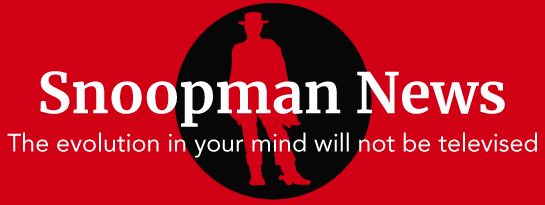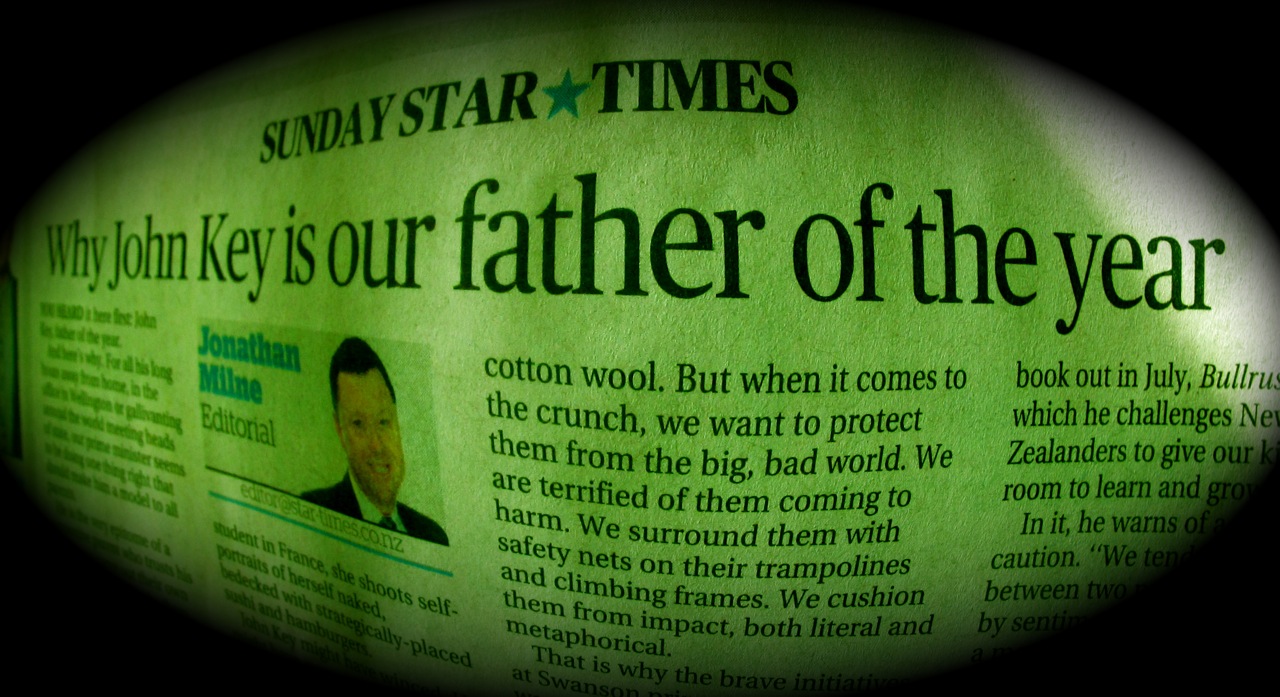An absent prime minister who leads a double life as a ‘brave’ dad? An art student who gets news media pre-publicity for an art exhibition – in Paris? And a school program called ‘free play’ that manages risk-taking?
In this article, we examine why a newspaper editor would announce the Prime Minister of New Zealand as the best ‘dadD’ of the year – in May. We find propagandist purposes, the PM’s track record of bullying a rival newspaper to pull a ‘scoop’ over his daughter’s nude art school photos, and unsafe ‘buying-out’ by a newspaper editor, who favours children ‘playing freely’ – with fire – in a structured school program. [15 minute read]
- My Precious: When a newspaper editor crosses a line conflating a country’s current political leader with best “dadD” status, you know ‘the fix is in’ to manipulate the public.
By Snoopman and Sophia Bigg-Storm, 4 May 2015
The Bees Knees of New Zealand Dad’s, or a P.R. Stitch-up?
‘Best DadD’ among “many dadD”? For New Zealand’s prime minister?
It’s a label any bad-spelling child ‘growing up’ in a world awash with social media might tag their father at some stage before they say ‘No’ to possessing the keys to the car to go out on a Saturday afternoon.
The Sunday Star-Times, in the ‘free market’ economy of New Zealand, ran a curious editorial today [May 3, 2015] under the headline, “Why John Key is our father of the year”. This ‘Best dadD’ declaration, replete with a capital D, might pass as one of those well-considered honorifics bestowed by a panel-of-‘judges’ that the media trot-out to ‘reflect society’s people of merit’.
It might even pass for a pre-emptive publicity-piece in the lead-up to ‘Father’s Day’, September 6, (while risking miffing every dad in the land).
It’s not a label you would expect to see declared by a Sunday newspaper anywhere in the Fourth British Empire one month before the half-way point of the Gregorian calendar year.
Unless, there is an undisclosed intent behind the editorial headline.
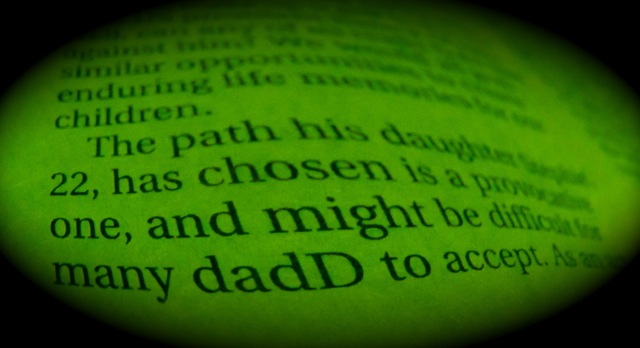
So why is the Sunday Star-Times risking pissing-off a consumer base used to being thought of as the ‘bees knees’?
Sunday Star-Times’ editor Jonathan Milne’s headline, “Why John Key is our father of the year”, screams ‘drama control piece’ for two purposes. New Zealand prime minister John Key’s daugther’s photographic exhibition Cherry on Top opens this week in Paris at the Jewelry Shop Gallery. Cherry Lazar (AKA Stephie Key) exhibits photos that draw upon ‘the likes of James Bidgood (high fantasy and camp), Pierre et Gillies (controversial for nude footballer photographs), David LaChappelle (kitsch pop surrealism) “and just bad Tumblr art in general” ‘ as Kim Knight reported on page 5 of the Sunday Star-Times in a full page article headlined, “Stephie Key: ‘Rebellion is not the intention'”.
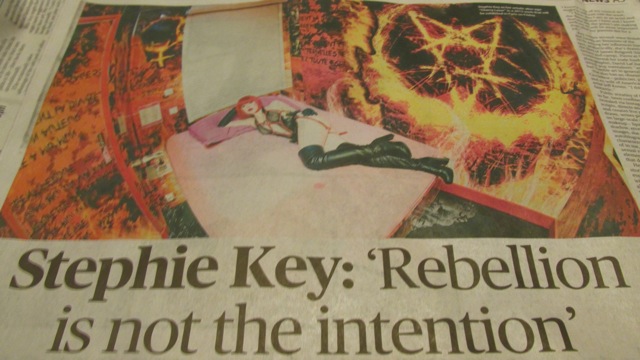
It may seem, then, that the newspaper is simply trying to educate a news audience about the ‘risque’ art pursuit of a person related to a PVP, or politically vulnerable person, in an economy more enthusiastic about funding the road-building cartels than supporting ‘the arts’.
However, when you learn that prime minister John Key personally rang the Herald on Sunday newspaper and pressured the editor to kill their original ‘scoop’ on ‘Stephie’s’ nude art photos (subsequently broken by The Daily Mail), you begin to see the influence, power and hold that Brand Key has on New Zealand’s mainstream news media. (An influence wielded by the National Party that can be seen in the 2008 documentary The Hollow Men and is one explored in a 2014 sequel to a book of the same title, Dirty Politics, by Nicky Hager).
The Ponytail scandal, which broke on April 22 2015 and revealed that John Key had harassed a waitress for six months at his neighbourhood cafe in the posh suburb of Parnell, Auckland, by pulling her ponytail – it turns out – was the same day that The New Zealand Herald‘s news feed on Press Reader ran a press release that Cherry Lazar was producing an art exhibition.Whether there’s more to this correlation, we at Snoopman News don’t yet know.
But, we can be sure that the economy’s only national newspaper, The New Zealand Herald, who had the scoop on the prime minister’s ponytail-pulling penchant, and his subsequent sad-arse, low-level bribery in the form of his pinot noir Apology Wine, delayed their scoop until the week that the prime minister would be out of the country, travelling to Gallipoli, Turkey, for the 100th anniversary of the Allied Forces‘ imperial invasion of that far-flung penninsula.*
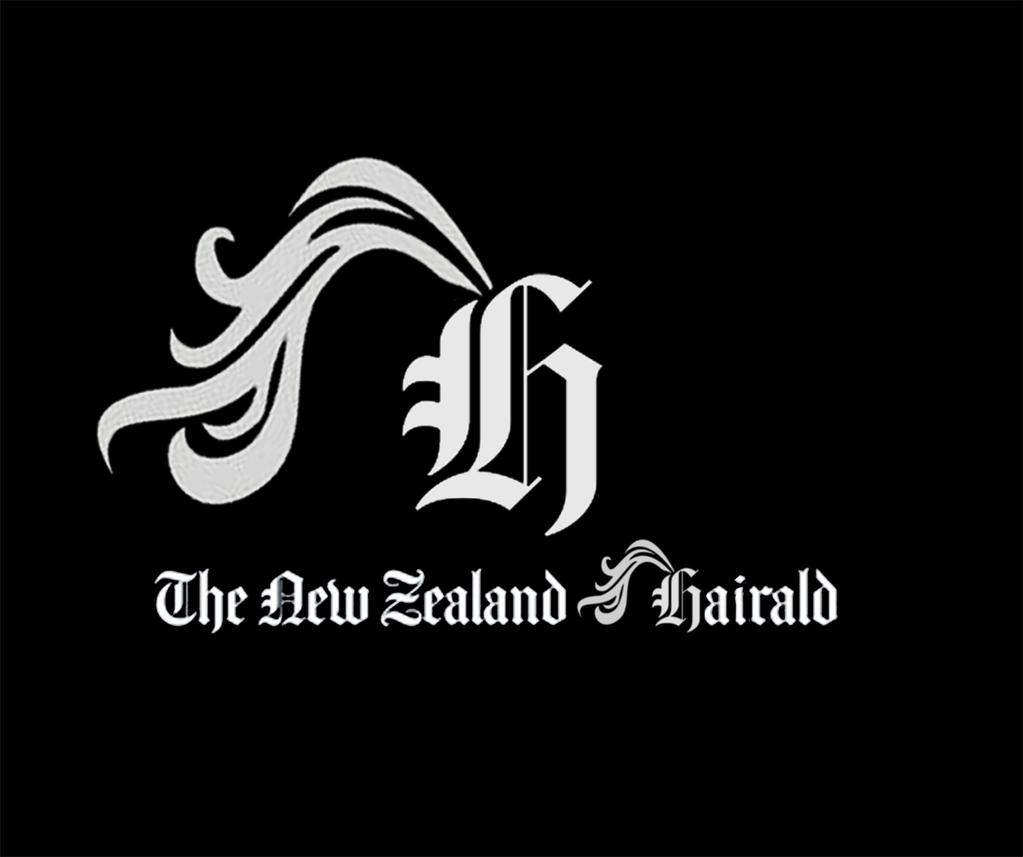
We know this, because the harassed waitress, Amanda Bailey, stated in her account of John Key’s hair-pulling bullying that she and her employers had waited and waited for a draft of public statement from Rachel Glucina [The Herald’s gossip columnist], who Bailey thought was a public relations expert advising her employers, the Hip Group cafe franchise, as the owners’ ‘friend’.
By the end of that week, April 25, when almost everyone in New Zealand had learned the John Key seemed to a have a fetish for ponytails, news outlets began running stories that his daughter had a forthcoming exhibition. The news media framed her photographic work as ‘risque’ art and explored her motivations.
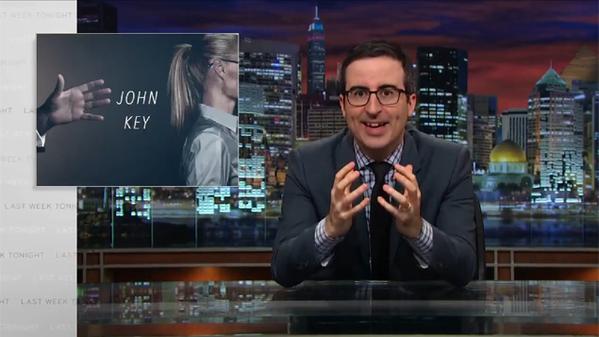
And ‘the economy’, populated by naive muggles and hobbits, learned that The New Zealand Herald did not care about anonymity of a source [the waitress], who also learned at a very late stage that she was being used by the newspaper’s gossip columnist [Rachel Glucina] as her source to manage the prime minister’s, the National Party’s and their Public relations firm, Cosby Textor’s, combined crisis of legitimacy.
As crisis management expert Paul ’t Hart observed in his 1993 paper, “Symbols, rituals and power: The lost dimensions of crisis management”, powerful groups use the media to relay information to “crisis stakeholders”. Indeed, “tacit communications of threats and promises are two major message strategies used to influence the behaviours of others”, noted Gideon Keren and Werner Raub in their 1993 paper, “Resolving social conflicts through hostage posting: theoretical and empirical considerations”. Therefore, during a crisis it is these threats and promises that can be expected to occur regularly as key players manoeuvre to advance their positions in the transforming power structure. (Under the rubric of ‘free markets’, the New Zealand political economy is fast being absorbed into a transnational superstructure, as we have reported more generally, in “Code Purple: Whistle Blowing on ‘Free markets’, the ‘Shock Doctrine’ and ‘New Constitutionalism’” and “Missing in News-action: Confronting ‘Deep State’ Power Crimes”).
As we shall see, John Key as a ‘Capital dadD’ is visually linked in the page-layout with the accompanying SS-Times articles that claimed Auckland’s housing boom is spreading throughout the country.
Our Father, who art in the Property Market Heaven
More importantly, by deploying this personalised news frame that ‘John Key is our father of the year’, the narrative casts Key as a ‘decent dad’. This is a vital crisis management move upon his return to the New Zealand realm in the wake of the Ponytail-yanking scandal, especially since it provided so much dangerous material for satire (which is the perennial Archilles Heal of the ruling class).
The importance of knowing that John Key personally rang the Herald on Sunday editor in August 2013 to have the ‘scoop’ on ‘Stephies’ nude art photos killed, is that such minor incidents reveal the underlying power relations between key actors in a political economy. It is telling that this editorial appeared in The Sunday Star-Times and not The Herald on Sunday, for had it appeared there, it would have been very obvious that the ‘fix was in’ to manipulate the public, that perennial population canvass for manufacturing consent to ‘govern’.
Editor Johnathan Milne’s editorial choices are revealing. The editorial frames John Key as a decent ‘dadD’, who’s daughter’s art pursuits reveal what happens when parents are “brave” enough to encourage their children to take risks. Milne segueys into at an initiative at a West Auckland school that is trialing a ‘free play’ model, wherein children do wild things like “climb trees, ride skateboards and play bullrush”.
Stuff that was done before the 1980s-to-1990s dirty political correctness attacks started, and came packaged with an obsession for categorizing trauma, pain and psychological afflictions, all to be measured, studied and publicized widely, as Adam Curtis shows in his documentary series, The Trap.
Milne’s editorial appears on page two, where before the editorial used to be, like in most newspapers, in the middle of the newspaper. Across the facing page, is page-three tacky fire porn. A girl feigns shock watching a flaming pile of milled kindling pine-wood. On the surface, the story, headlined, “Schoolkids learn to play with fire”, is about the West Auckland Swanson School’s risk-teaching ‘free play’ program.

But, the point of the article titled “Schoolkids learn to play with fire”, across the page from the editorial announcing the economy’s prime minister as ‘father of the year’, is signaled by an opinion attributed to David Slack, author of a book titled, Bullrush!
“It was disappointing when conversations about children’s freedom became categorised as a political debate between left and right, when the issue was about freedom to learn and grow, he said”, wrote reporter Laura Walters. This view locates ‘children’s freedom’ as the expression of play unencumbered by institutional ‘political correctness’ meddling, without any awareness or recognition of where the ‘political correctness’ phenomena came from.
‘Political correctness’ was an invention of right-wing think-tanks in the United States and United Kingdom during the Reagan-Thatcher era. Anglo-American elite policy planners sought to attack so-called left-wing anti-capitalist groups opposed to the dominance of super-rich people and corporate control of governments and the social life of whole societies. Therefore, any phenomena that supported human rights, environmental safeguards, and social justice for indigenous peoples run rough-shod over by colonizing empires, were framed as ‘political correctness‘.
So, it was a clever strategy by the ‘free market’ elite planners in the 1980s and 1990s to attack ‘left-wing’ groups, who opposed their economic ‘shock treatments’ such as the downsizing of state services (which caused mass unemployment), the corporatization of public infrastructure and services, and the removal of local sector subsidies (which destroyed domestic manufacturing and rural communities). Clever, because at the same time, the measurement of people proliferated and worked as a mechanism of social control through performance reviews, self-diagonized health issues, and studying group behaviours (as Episode II: The Lonely Robot of The Trap documentary series shows).
All the while, the transformation of the world, under the ‘free market’ economic framework, or the Shock Doctrine, which was planned under the auspices of the ‘1980s Project’, was occurring under the direction of a Euro-American oligarchy, in their commitment to the Cult of World Domination. This World Domination Cult banked on disciplining the world through engineered economic shocks and proliferating financial incentives and penalties through the ‘free market’ economic framework.
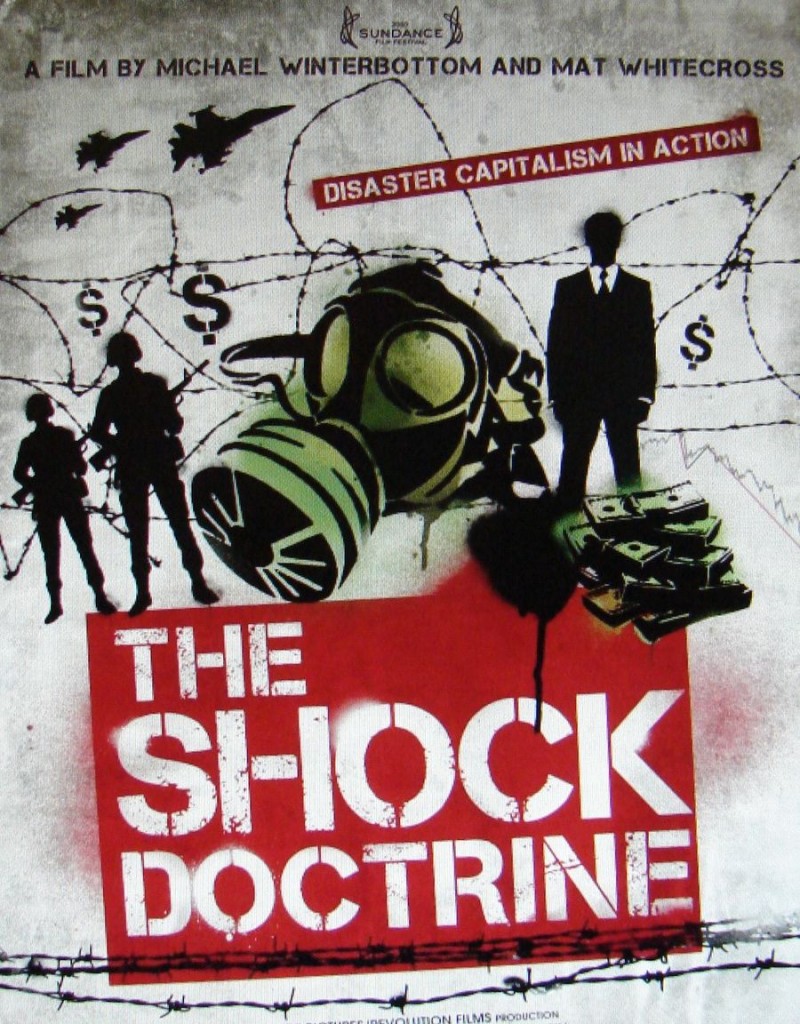
So, it is doubly ironic that the rest of the Sunday Star-Times’ page below the ‘editorial’ (see image above), is all about an expectation that the residential property bubble will spread (rather than pop like an over-stretched party balloon). In this way, John Key, the ex-London and Wall Street banker, is associated with the so-called rock-star economy that sychophantic news media missionaries have sickeningly hyped (and may as well have kissed Key’s shoes).
Therefore, the editorial and accompanying articles are together ‘dog whistling’, which is a public relations technique that plays on peoples’ prejudices, fears and frustrations, and works on those attuned to hear such signals, as revealed more generally in Nicky Hager’s 2006 book, The Hollow Men. The encoded message behind the framing of Key as ‘our father of the year’, which invokes a provocative ‘nation-as-person’ metaphor, is that with John Key as prime minister, New Zealanders get a ‘brave dadD’, who oversees an apparent property boom that is spreading, and a role model for children to be set-free from the burden of political correctness (which is subtlely framed as a pesky left-wing thing, because of the association of property speculation with ‘our father’, a pro-corporate right-wing rich-lister, or oligarch).
By deploying fire motifs, the SS-Times is signalling that when it comes to playing with fire, there are risks and rewards and rebellion will be punished with banishment to the secular hell of life in the poor house, renting.
The ‘Buying out’ News Filter
In societies with formal democracy, a propagandist system of communication is required
because the state cannot openly intimidate and suppress ‘free’ populations without losing the legitimacy to rule. Edward S. Herman and Noam Chomsky (2008) argued in their book Manufacturing Consent: The Political Economy of the Mass Media that the news media’s construction of the world served to buttress elite power. Herman and Chomsky observed that because mass media systems are owned privately and that there is an absence of obvious state censorship in a commercial media environment, it was hard to detect a propaganda system, even though economic wealth was highly concentrated.
Propaganda here means the mass deployment of persuasive techniques by dominant coalitions in order to gain society’s acquiescence or submission. Here we briefly explore the propaganda deployed by the Sunday Star-Times to support the editorial framing that New Zealand’s prime minister is ‘dadD of the year’, already.
The construction of the page two and three spread shows conscious decisions to re-set the news agenda by framing New Zealand’s prime minister as a decent ‘dadD’. By invoking the ideologically-loaded ‘nation-as-person’ metaphor, Key is cast as a father who encouraged his own children to take risks, the result of which may not suit his preferences. This ‘nation-as-person’ metaphor also relies on his well-known back-story (Key was raised in a statehouse and is now a rich-lister with a net-worth of $55million), to cast Key as a role model to white New Zealand to take risks by joining in the residential property market bubble. The newspaper (along with other news outlets) could have investigated how prevalent bullying of waitresses and other hospitality industry workers is ahead of John Key’s return.
Therefore, we find strong circumstantial evidence that the Sunday Star-Times newsroom has engaged in ‘buying-out’, which is a type of news filtering that describes the elite milieu that journalists and editors are themselves set in. Circumstantial evidence that shows a “meeting of the minds” or “conscious parallel business behaviour” can be used to support other evidence, as Neal Kumar Katyal demonstrated in his 2002 paper “Conspiracy Theory”, published in The Yale Law Journal, and as Iain Ayres found in his 1987 paper, “How Cartels punish: A structural theory of self-enforcing collusion” published in the Columbia Law Review; and as R.D. Marks argued in his 1986, “Can conspiracy theory solve the “oligopoly problem”?” published in the Maryland Law Review.
The buying-out filter allows elite sources to use the news as a means to manipulate public perceptions in regard to matters that harm society, by using codified communications that elites can decipher. Because ‘buying-out’ entails the deliberate observance of ideologically constructed news frames, despite widespread public dissent, it requires conscious choices to obscure matters that are to be kept in the dark.
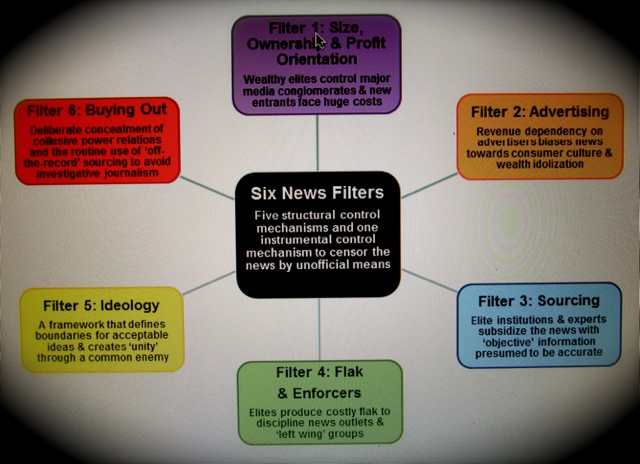
The ‘buying-out’ news filter conceptualizes how collusion and conspiracy can occur in large news outlets on a routine basis among personnel who have likely incorporated an ideological prejudice that collusive or conspiratorial behaviour among elites is non-existent or unprovable (as was modelled in a thesis on media behaviour and performance during the Global Financial Crisis and Bank Bailouts of 2007-2008). [See: It’s the Financial Oligarchy, Stupid, p.279].
The Sunday Star-Times editorial may as well have been titled, ” ‘Hush little news puppies – go play with fire, safely’ – says Capital dadD”, given its propaganda framing to protect New Zealand’s Serial Liar-in-Chief.
So, who wrote the drafts of this communication that became the editorial, “Why John Key is our father of the year”? It can’t have been all Jonathan Milne’s ideas. He’s not 100% chimp. What conversations culminated in this editorial and who were they between? What communications occurred between Key’s National Party’s public relations firm, Crosby Textor, The Sunday Star-Times, and the newspaper’s owner, the Fairfax media media cartel?
Who were the PR chimps for #TeamKey that worked upon Jonathan Milne? He’s pretty cavalier about the idea of perks of the PM’s job (and essentially downplaying the secretive conversations between Five Eyes ‘deep state’ leaders Key and Obama on golf courses). So, have the PR companies been wining and dining the Sunday Star-Times editor, the way the Herald on Sunday reporters and editors have been known to receive ‘gifts’ (or low-level bribes) on a daily basis from PR companies (an act that strokes the ego and elevates status among Elevator Status-riding people)?
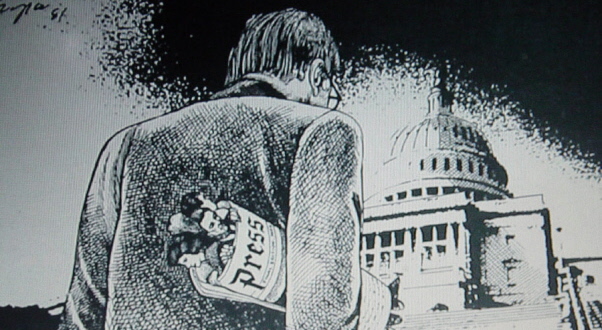
After-all, the Sunday Star-Times and its owner Fairfax Media, and the other media cartels that own ‘New Zealand’ news outlets, could sustain investigations into important issues such as the construction of totalitarian super-states through proposed supra-international ‘free market’ economic frameworks, such as the Trans-Pacific and Trans-Atlantic Partnerships. Or who exactly are the 107 individuals with net-worths of over $50 million who only paid $70,000 in income tax in 2013? Or the SS-Times could investigate the origins of ISIS, as RT America has done, since the Key ministry persists in supporting the US-UK-NATO Alliance’s false flag terror operations.
To sum up, the Sunday Star-Times editorial’s framing (and the framing of associated articles) are an attack on everyone’s brains. That’s how propaganda works. The tricks to propaganda working are the omissions of key evidence (and the hidden purposes), which may not even be fully disclosed to such people as newspaper editors. That is to say, there are layers and layers of deception, and deception upon deceptions in the political economies of major and significant states.
By asserting that John Key is a Capital dadD, the SS-Times is, in effect, signalling that New Zealand’s prime minister is protected property and the BrandKey bubble must not be allowed to ‘go POP!’ The SS-Times‘ propaganda is saying if the National Party’s BrandKey balloon does burst, the entwined fortunes of the upper class and upper middles class, or the top 10%, will ‘go south’.
So, the ‘Father of the Year’ editorial, the Stephie Key article and the other articles analyzed here, demonstrate a very sophisticated crisis management effort. This effort promises the good times can keep on rolling for the wealthy, if people in key positions within New Zealand’s media cartels, or the InaneStream Media (ISM), advance the game, as signalled by Fairfax’s flagship Sunday newspaper, the SS-Times.
Therefore, we find it unsafe that the Sunday Star-Times and it’s editor Jonathan Milne has engaged in these propagandist activities, especially when Nicky Hager’s book Dirty Politics showed clear evidence of the prime minister’s conscious role in subverting New Zealand’s already shelled-out democracy. When it becomes widely known that John Key himself acknowledged a mere two days after re-winning power on TV3’s Campbell Live, owned by the MediaWorks cartel – that the dirty attack politics which his National political party’s head political surveyor, David Farrar (of Kiwiblog infamy), Key’s friend Cameron Slater (of Whale Oil blog infamy), and Key’s top political advisor and PR man Jason Ede, together as a combination had engaged in – actually benefited right-wing parties such as #TeamKey’s National Party, people such as Jonathan Milne will finally realise it is unsafe to participate in furtherance of conspiracy.
That dark night with Doublesplusgood country-wide dawn raids is fast arriving. Cheers!
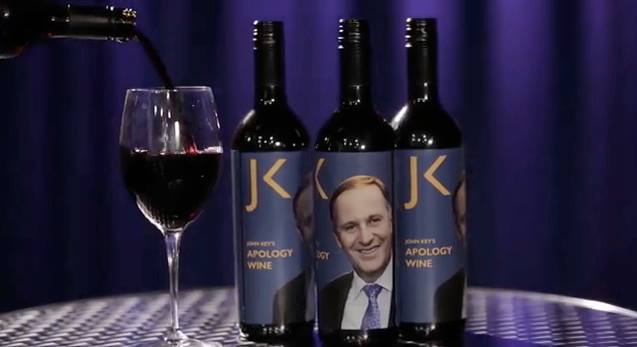
=================
By day, Snoopman works undercover as an ordinary mortal, editing news at a television station. By night, Snoopman researches the wicked deeds of the powerful and enjoyed experimenting with his pyrotechnic super-powers as a Snoopling. Amazonian-American journalist Sophia Bigg-Storm’s investigated how an Anglo-American Brotherhood conspired to dominate the world by controlling oil and finance, enforced by military aggression, subversion and other intrigues. Her investigations were suppressed by her former employer, The National Enquirer, a newspaper that movie critics think is just make-believe because it was depicted in the film Citizen Kane.
=================
* Although the story was ultimately broken by The Daily Blog, because the waitress, Amanda Bailey, realised she had been duped by a gossip columnist from The New Zealand Herald, the economy’s only national newspaper appears to have delayed publishing an additional day when The Daily Blog‘s editor Martyn Bradbury rang his counterpart, editor Shayne Currie, telling him that the waitress revoked her permission for the information gained on false pretenses. Because this phone call took place after 11pm, this would have created a publishing crisis for The Herald, blowing its lead story).
=================
Related: “A Serial Ponytail Yanker’s Lasso of Truth Interview” at: https://snoopman.net.nz/?p=2727
Snoopman News at:https://snoopman.net.nz
Facebook at Snoopman News
Twitter Snoop Monster @SnoopmanNews
